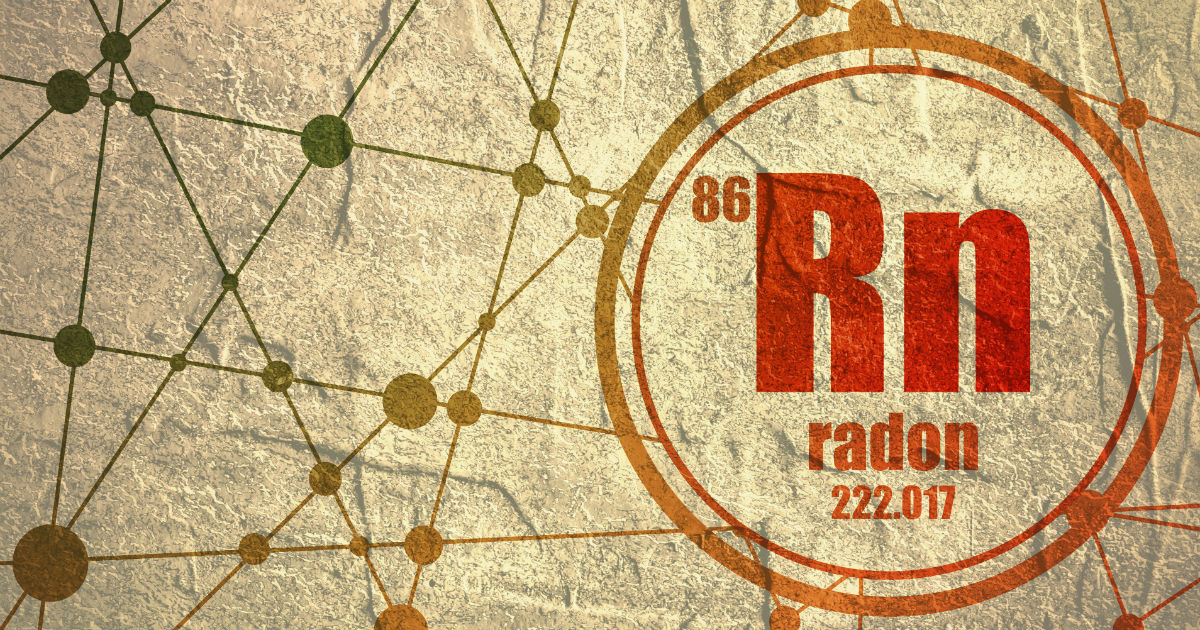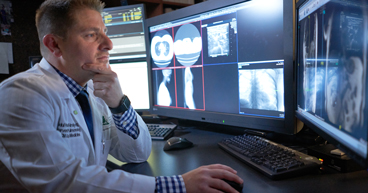
If you asked what causes lung cancer, many people would immediately name cigarette smoking. And with good reason—it causes at least 80 percent of lung cancer deaths in the United States. In fact, the Centers for Disease Control and Prevention (CDC) reports that cigarette smokers are up to 30 times more likely to be diagnosed with, and die from, lung cancer than non-smokers.
Less commonly known is lung cancer’s connection to radon. The colorless, odorless radioactive gas is emitted from the natural breakdown of uranium in soil, rock and water and permeates the air we breathe. According to the Environmental Protection Agency (EPA) , radon is the leading cause of lung cancer in non-smokers and the second-leading cause of lung cancers overall. The risk of getting lung cancer from radon is rare. Still, the World Health Organization says radon is linked to 15 percent of all lung cancers worldwide.
Where radon is found
According to the American Cancer Society, radon breaks down into minuscule radioactive elements called radon progeny, which when inhaled can settle in the lining of the lungs, giving off radiation that “can damage lung cells and eventually lead to lung cancer.”
Dropping temperatures are cause for additional concern. During the chilly winter months, more warm air than usual escapes a home—typically via drafty windows, doors and attic hatches that may not be properly sealed, as well as cracks in floors and walls and gaps around pipes. The escaping warm air causes a vacuum effect inside the house, drawing in radon from the soil below the foundation. During warmer weather, the air inside a home is diluted when fresh air comes in via open windows and doors. When it’s cold out, windows and doors remain closed to keep the home warm.
Radon can be found just about anywhere, including homes, office buildings and schools—whether they are new or old. Radon may also be found in a home’s water supply, according to the CDC, particularly if the water comes from an underground source like a well. “Radon can escape from the water during everyday activities such as drinking, washing dishes, cooking and showering,” the agency says. “These actions could make a small contribution to the radon gas present in the air in your home.”
Radon raises risk
Smoking and radon exposure are both considered risk factors for lung cancer, but the risk for smokers exposed to radon is significantly higher than for non-smokers. A 2013 article published in the American Journal for Public Health stated that “more than 85 percent of radon-induced lung cancer deaths are among smokers.”
The results of a study conducted in northwest Spain between 2004 and 2008 and published in Cancer Epidemiology, Biomarkers & Prevention found that radon exposure increases the risk of all lung cancer types, with a higher risk for small cell lung cancer and other histologic types than for squamous cell carcinoma (SCC) and adenocarcinoma of the lung. The greatest lung cancer risk was linked with “uncommon histologic types (including large cell carcinomas) followed by SCCs,” the study found.
Because having your home or office building tested is the only way to accurately determine the radon level, the EPA and CDC strongly recommended it. Inexpensive radon test kits can be purchased at most hardware or home improvement stores. You can also order test kits from National Radon Program Services or by calling 1-800-SOS-RADON (1-800-767-7236). Certified radon-testing professionals may also be called to inspect your home and/or offer recommendations for repairs or ways to vent radon gas from the home.
How is radon measured?
According to the U.S. Army Corps of Engineers:
- Radon gas is measured in picocuries per liter (pCi/L) of air.
- A curie is “a standard measure for the intensity of radioactivity contained in a sample of radioactive material.”
- A picocurie is one-trillionth of a curie.
- If the radon level is found to be 4.0 pCi/L or greater, the EPA recommends taking action to reduce the levels, which can be achieved a number of ways, usually by a licensed professional.
The highest indoor concentrations of radon in the United States are found in the Northeast and upper Midwest. The EPA website offers an interactive map to help you determine radon concentrations in your community. The agency also provides information on state and local radon resources.

